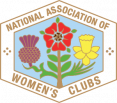As an Association we would like every pregnant women in the UK to be informed about the possibilities of donating their cord blood during their pregnancy, and the Government to set up a programme and invest in trained midwives to be available in every major hospital, twenty four hours a day, seven days a week, to collect and store the cord blood until it can be transferred to a regional centre. Cord blood has to be collected immediately after the birth for it to be effective so by having a trained midwife in every hospital just imagine the difference it would make. Cord blood is rich in stem cells and can be used to treat patients who are suffering from life threatening diseases including malignancies – cancer of the blood, for example Leukaemia and the Lymphoma Bone marrow failure – when bone marrow doesn’t produce the cells it and Blood disorders such as Sickle Cell Anaemia. Immunodeficiency’s when the immune system doesn’t work properly, and Metabolic Disorders – which affect the breakdown of waste products in the body.
With scientific research in this field they are constantly discovering more diseases and conditions that can be successfully treated with the stem cells found in cord blood. Stem cells are the body’s primary cells and they are very powerful, they can turn into other types of cells, like muscle, skin and red blood cells and they can divide to replenish damaged cells, so act as a repair system for the body. Getting adult donations is a long process, from finding a match from the register, running tests on the potential donor and then organising the donation and transport. Cord blood is available immediately for patients in desperate need and as the cord blood is less mature they can develop to suit the patients. For a transplant to be a success, stem cells taken from the cord blood must match the patients tissue type as closely as possible, so for the patients to have the best chance of a match as much cord blood as possible should be stored, this can only happen if pregnant women are made aware of this in the first instance.
The Anthony Nolan Trust are aiming to collect cord blood units from 15,000 people over the next five years, this will complement the United Kingdom’s bank containing approximately 50,000 cord units. A bank this size would mean 80% of people who need transplants could find a match, at the moment only half get the match they need. Also the NHS wouldn’t have to import cord blood from overseas banks, which cost more than getting cord blood in the UK. The NHS cord blood bank was set up in 1996 to collect, process, and store and supply cord blood for transplants. Once it has been processed and frozen it can be stored until a patient with a matching tissue type needs a stem cell transplant. Research has shown that these units can be stored up to twenty years. Mothers must give their consent for the cord blood and any part of the placenta or cord itself to be collected, without consent the placenta and blood are thrown away. When giving consent for the donation, the mother gives up all future rights to the donation. At present it can only be collected in hospitals where there are specially trained staff to harvest it. Currently we understand there are eight Anthony Nolan Trusts registered hospitals, and a further six NHS hospitals where cord blood can be donated and at present birthing has to take place in these hospitals. The hospitals chosen by the Anthony Nolan Trust were because of the high birth rates and they are ethnically diverse areas, which means they can collect a wide variety of tissue types, which will help a wide variety of people.
Bone marrow transplantation is a medical procedure in which the diseased bone marrow is replaced with a healthy and functioning bone marrow. Cord blood has advantages and it can be stored and readily available when a transplant is needed. Also there are less side effects than the previous invasive methods used. Having a trained midwife to harvest cord blood in every major hospital could greatly improve the lives of many people. Cord blood transplantation is often an effective alternative for people in need of bone marrow transplantation who cannot find a suitable tissue-matched donor, either within their own family or from unrelated donors on bone marrow registers. Implementing the above procedures will mean that many more lives can be saved as 70% of people who need a transplant will not find a match; banking stem cells would significantly improve this.
Reply from:-Ministerial Correspondence and Public Enquiries unit
The Department of Health asked NHS Blood and Transplant (NHSBT) to lead a review on the future of unrelated donor stem cell transplantation on the UK. The UK Stem Cell Strategic Forum was established and considered views from scientists, clinicians, economists and patient reps working in this area. The published review -The Future of Untreated Donor Stem Cell Transplantation in the UK- included 20 recommendations on the cell transplant services, including the improvement of cord blood stem cells. The Government then allocated £12m to NHSBT and the Anthony Nolan charity to improve stem cell services. The increase in cord blood units banked is achieved through a sustainable approach and this is affordable through funding both of these organisations collection centres to operate a 24/7 service. Since 1996 over 16,000 units have been collected and banked. About 90% of white patients have a chance of finding a match but this falls to 30-40% for black or mixed percentage patients. This is being addressed by increasing the number of black, Asian and minority ethnic donors on the stem cell donor register.

